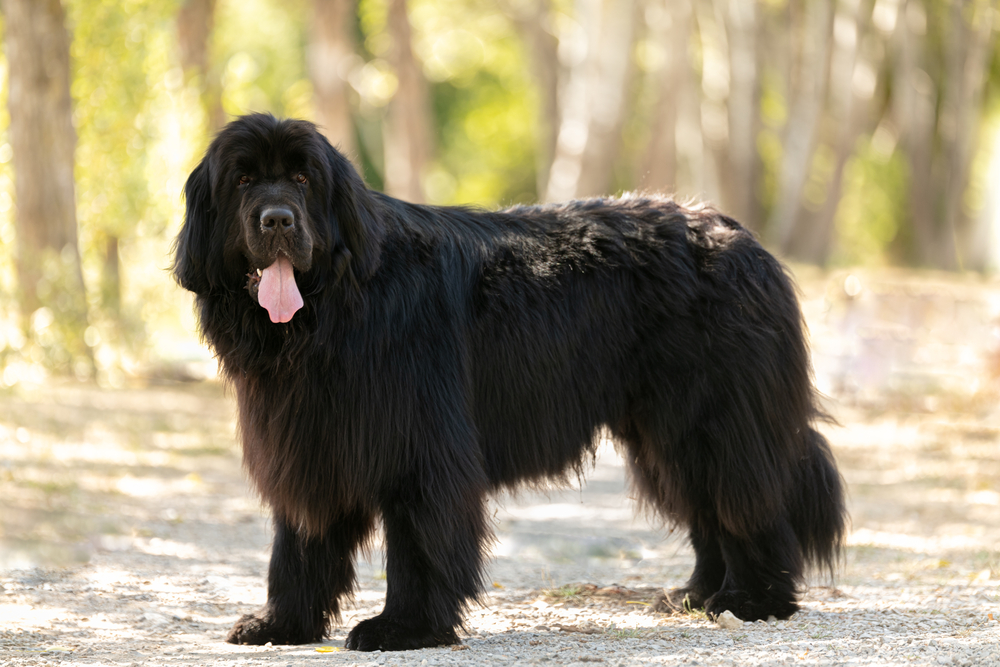The Newfie is a powerful, massive dog with a broad, heavy head and slightly arched crown. The dog has a broad muzzle with a moderate stop, relatively small triangular ears, and deep-set dark eyes that are widely spaced. Newfoundland’s oily, water-resistant double coat partially explains their peculiar swimming prowess. The outer coat is coarse and moderately long, while the undercoat is dense and soft. Black is the commonest coat color, but finding Newfie with a white coat and black markings, black with blue highlights, or grey is not unusual.
If you want a mega Teddy Bear in a dog, the Newfoundland is the pet to bring home because of its sweet disposition. This dog is affectionate to family, especially children, very smart, and has an innate desire to please. Family times are the Newfie’s best moments. This means that leaving the dog home alone for extended periods or banishing them to the kennel dulls the giant dog.
The Newfoundland is a devoted and loyal companion that’s obedient to its master and mild with guests. While they rarely bark, these dogs tend to be very protective of family. Instead of an all-out attack on strangers, a Newfie typically stands between the family and the intruder when they detect a threat. Otherwise, the giant dog will meet visitors, children, and adults with a warm welcome.




















